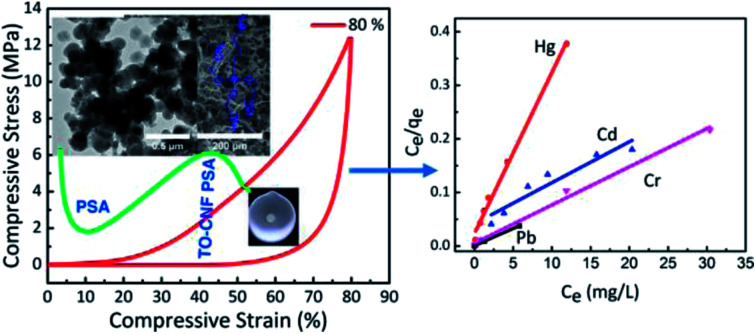- Record: found
- Abstract: found
- Article: found
Precipitated silica agglomerates reinforced with cellulose nanofibrils as adsorbents for heavy metals†

Read this article at
Abstract
Silicon-containing compounds such as silica are effective heavy metal sorbents which can be employed in many applications. This is attributed to the porous nature of hydrothermally-stable silica, endowing such materials with high surface area and rich surface chemistry, all responsible for improving adsorption and desorption performance. However, to this day, the wide application of silica is limited by its skeletal brittleness and high production cost coupled with a risky traditional supercritical drying method. To solve the named problems, herein, precipitated silica agglomerates (referred to as PSA) was crosslinked with TEMPO-oxidized cellulose nanofibrils (TO-CNF) as a reinforcement in the presence of 3-aminopropyltriethoxysilane (APTES), via a facile dual metal synthesis approach, is reported. The resultant new silica-based sponges (TO-CNF PSA) showed desirable properties of flexibility, porosity and multifaceted sorption of various heavy metals with re-usability. The experimental results showed maximum adsorption capacities of 157.7, 33.22, 140.3 and 130.5 mg g −1 for Pb( ii), Hg( ii), Cr( iii) and Cd( ii) ions, respectively. Such a facile approach to modify silica materials by attaching active groups together with reinforcement can provide improved and reliable silica-based materials which can be applied in water treatment, gas purification, thermal insulation etc.
Abstract
PSA was inexpensively ameliorated by cellulose nanofibrils reinforcement. The resultant sponge with mechanically strong skeleton was evaluated as an excellent adsorbent for heavy metals.

Related collections
Most cited references1
- Record: found
- Abstract: not found
- Book: not found